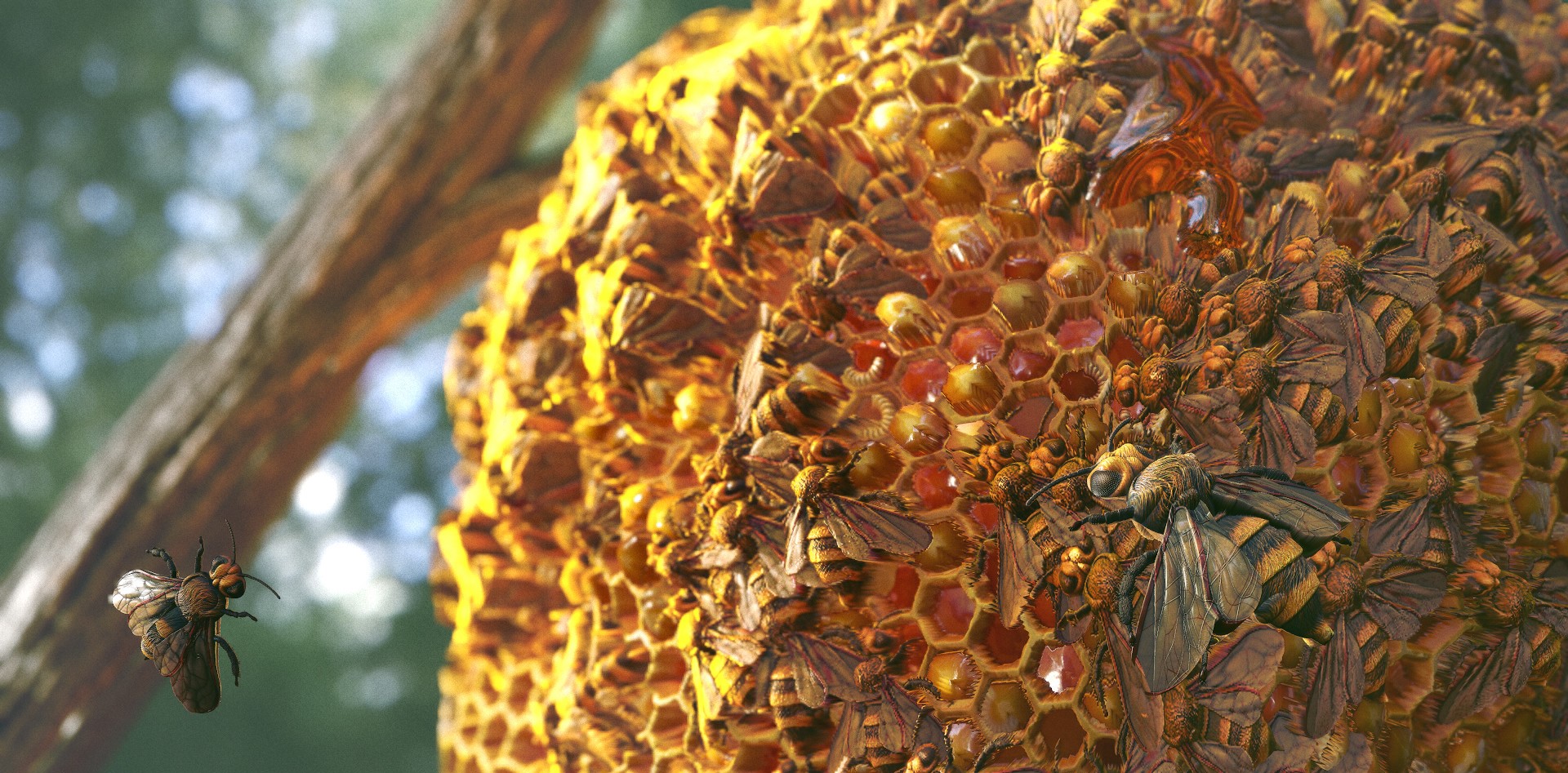Wasp Bees
Basic Information
Biological Traits
Toxic Sting
- A PC who begins their turn within a bee swarm must succeed on a DC 13 FORT save or be nauseated for 1 round.
Bee Size Initial Damage Secondary Damage DC 11 FORT save DC 11 FORT save Fine 1d2 1d3 Diminutive 1d3 1d4 CON Tiny 1d4 CON 1d6 CON DC 13 FORT save DC 17 FORT save Small 1d6 CON 1d8 Acid Medium 1d8 2d6 Large 1d10 2d8 DC 19 FORT save DC 21 FORT save Huge 2d6 Acid 3d6 Poison Gargantuan 2d8 3d8 - They stinger can be pulled out with a DC 12 STR check, which deals twice the initial damage on its way out.
- If the DC is better by 4 (DC 16 and above) the stinger snaps off, leaving the barb inside.
- The barb can be removed with a full round action and a DC 15 Heal check, still dealing damage upon removal.
- Poison comes into effect 5 rounds after the bee sting has remained inside the target 5 rounds later.
- These do not stack in a swarm.
Ecology and Habitats
Shelters
Bees proliferate in warm weather, but build their abodes in cooler areas within the shade of trees, caves, tunnels, walls or underground. Every spring, nests are reinforced and renovated with chewed fibres, saliva and wax.Dietary Needs and Habits
Nectar
While they are alway able find some suitable plant to draw nectar, once a decade, bees explode over the diverse array of flowers blooming all at once amidst the arid landscape. These vibrant blooms are a sweet treat to these industrious pollinators and they are able to store enough honey to last the immediate winter; and then some.Additional Information
Social Structure
Hive Swarm
Sterile worker bees and drones live in large colonies of thousands birthed by a Quya Wanquyru. As larvae, they grow in tiny comb cells and consume nectar. Most grow into worker bees to forage, nurse the next brood and defend the hive, while occasional drones are born to mate with queens to maintain the colony's population.Uses, Products & Exploitation
Wild Honey
Honey hunters descend towering cliffs on man-made ladders to harvest enchanted honey nestled under jagged overhangings. It is dangerous work, but obtaining honey is so central to the people in the Third Quadrant and is impossible to separate their association. It is prized as a thing worthy of worship. Recipes for salves and other treatments use the rare but nearby honey varients as bases for dealing with ulcers, jaundices, vomitings and stresses.Civilization and Culture
Major Language Groups and Dialects
Directional Dance
Honey hunters observing the bees in their nests recognize complicated dances that correlate to resources in their environmental surroundings. Information translated into dance include:Waggle Run: Bees waggle back and forth while running in a straight line. Its duration represents how far the nectar's source is and its angle relative to a vertical line represents the outward angle in relation to the sun. Round Dance:Bees moves in a circular pattern, alternating between clockwise and counterclockwise, to indicate a nearby source and the fastest direction to get there. Tremble Dance: Bees rock forwards and backwards and side-to-side to request help.
Alternate Name
Awiha Lachiwana Mapa Mama Misk’i Chuspi
Tuktu Urunquy Wanquyru
Sleek 2 pairs of wings Narrow Waist Pointed Lower Abdomen Shiny Slender Legs shaped like cylinders
Brown/Black, Yellow with some White Fur Red/Orange or White tail
Swingers
Lifespan
1 - 2 years
Conservation Status
Honey Towers in Giantsfall covered in a maze of honeycomb walls
Average Length
2 in
Wingspan
4 -5 in
Wingspan
4 -5 in
Average Physique
Body Tint, Colouring and Marking
Geographic Distribution
Related Ethnicities
Related Myths
Remove these ads. Join the Worldbuilders Guild









I love your formatting and all the connections you make between the bees and their honey to other parts of your world. I also like how you went into detail about the bee dances, describing what some of them look like and mean. I'm curious though, why specifically wasp bees? I'd like to see more clearly how you drew from the two different species to make something new, though perhaps I just don't because I don't know all that much about the differences in the first place.
Glad you enjoyed it. I suppose it was a matter of game utility. From a cost/benefit pov, I wanted the effects of the honey to be a strong enough draw against the dangers dealing with the bees. So I describe them as more wasp-like to quickly get across that their sting would be more dangerous than one might think.